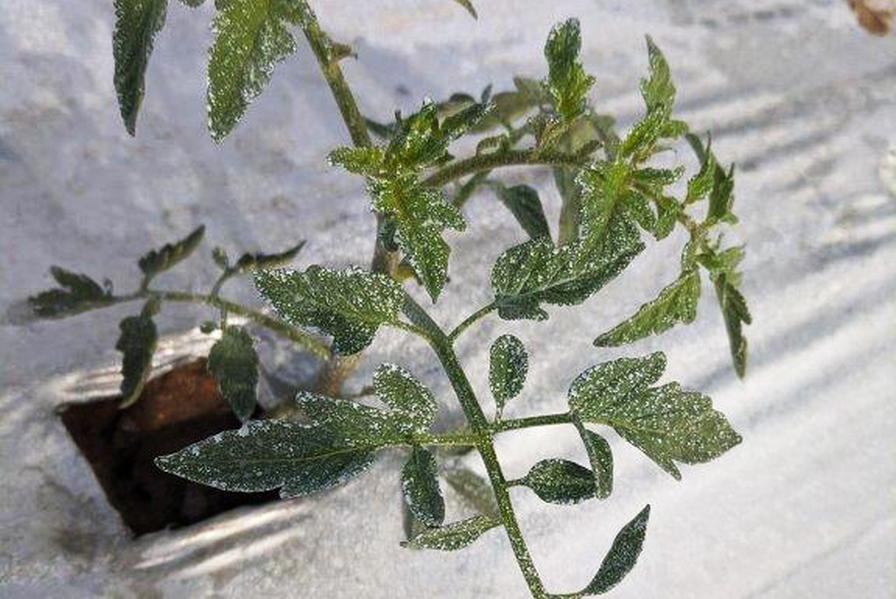Wanna Keep Whiteflies Off Your Veggie Crops? This Slick Spray Mix Might Do the Trick

This tomato seedling is coated in a mix of kaolin clay and limonene. Researchers from the University of Florida have found the unique spray mix a big turn-off for whiteflies.
Photo courtesy of UF/IFAS
The whitefly is a notorious pest that requires high attention to detail in effective crop protection. Florida tomato growers know this all too well as the tiny insect can vector the deadly tomato yellow curl virus. Worries over pesticide resistance have growers looking for other management methods.
“I was contacted by a local tomato producer who has now had two recent seasons with his fields overtaken by this virus, despite weekly spraying,” says Xavier Martini, a UF/IFAS Entomologist at the North Florida Research and Education Center in Quincy. “The whitefly is able to use other plants as hosts, including surrounding row crops and weeds, which helps it to remain near crop fields even where insecticides are being used.”
Extreme difficulties like this in the field like this require a different approach. This conundrum inspired Martini and a team of research colleagues to look for another remedy. Previous studies helped narrow their testing focus to a white clay called kaolin and an essential oil called limonene, each of which is approved by the EPA for agricultural use. Although previous publications have not documented use of the two in combination, kaolin’s absorbency of essential oils is well-noted.
“These products are easily found and relatively inexpensive, and they can be applied using a tractor that is standard spray equipment on most farms,” Martini says. “They also happen to meet the requirements for organic production, so although that was not a specific goal for this study, it is a bonus.”
The study, published in the journal Crop Protection, details applications in both closed-cage plants and open-field test plots, with some plants receiving a single type of treatment and others a combination of the two. While the single treatments resulted in fewer nymphs and adults than non-treated control plants, the combination resulted in the smallest whitefly counts.
“It’s not clear why the whitefly doesn’t like the leaves applied with the clay,” Martini says. “We know whiteflies are attracted to the color yellow, so we initially thought it was a visual repellent. We found that it was more likely the texture of the coating. But when combined with another type of repellent in limonene, we saw the whiteflies were even less drawn to the plant.”
The trials required weekly applications due to plant growth and rainfall, although Martini noted the clay’s water solubility can also be viewed as a positive for producers. Any spray that may remain on harvested produce can be easily rinsed off during processing.
Research was funded through a USDA grant administered by the Florida Department of Agriculture and Consumer Services.
According to UF/IFAS, research on kaolin-limonene treatments is continuing and will next focus on squash and other cucurbits.









